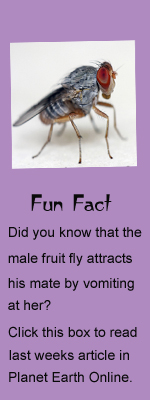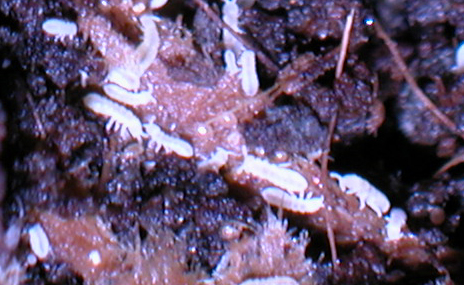A number of people have asked me how to avoid fruit flies around the worm bin. The simple answer is that you can’t avoid them. You should, instead, seek to manage them. This is relatively easy to do, once you know how.
Why Are There So Many Fruit Flies?
Although you can’t see them, fruit fly eggs are literally coating most of the produce that you bring home from the store. A female fruit fly can lay 20+ eggs per day and can store sperm in her body for up to 2 weeks. That’s the potential for over 280 eggs per fly in just two weeks! Fortunately, by thinking like a fruit fly you can successfully lead them down the path to defeat. Here are some easy steps to get them under control.
Step 1 – Form A Barrier
Fruit flies will naturally be attracted to the worm bin if any decaying organic matter is accessible to them. You should therefore bury all feeds under a good 4 inches of bedding. An old piece of carpet or burlap placed over the bedding will work as an extra barrier. These will also prevent any developing fruit flies from getting out of the bin.
Step 2 – Feed Their Addictions
Create the most irresistible source of fermentation to draw the flies away from the worm bin. Fruit flies and their larvae are attracted to fermentation since they feed on yeast. They’ll do anything to get to the source. This makes them easy pray for the attract and trap method of management.
Start by creating an intoxicating brew and housing it in a container with a very small hole–just large enough for the fruit fly to get in. You’d be surprised at how many fruit flies will find a tiny hole and enter your trap provided your brew is strong enough to guide them.
Step 3 – Challenge Their Intelligence
Once inside the trap, the fruit flies will no longer have the sense of smell to guide them out. The key, then, is to make a complicated exit path, thus trapping them inside.
Jenn’s Cheap & Easy Fruit Fly Trap
This past summer I discovered that a sport cap water bottle is a very effective trap for fruit flies. When the sport cap is pulled open the holes are just big enough for the fruit flies to enter, yet the cap poses a complicated exit that most will not get out of.
To draw the fruit flies in, I throw a few pieces of pineapple in the bottom. It will take a couple days for the pineapple to ferment. But when its ripe enough, the fruit flies will enter the trap in droves! As the trap fills up, just press down the sport cap, rinse the bottle outside and start again.

Fermented pineapple in a sport cap water bottle.




 This photo approximates the actual size of sow bugs or pill bugs (also called the woodlouse). Sow bugs are occasionally introduced to indoor worm bins on egg ridden leaves which are brought in from outdoors. They are quite beneficial to the worm bin, however, due to their size, they’re generally not appreciated. To avoid sow bugs in indoor bins, we recommend that you don’t add leaves and other debris from outdoors.
This photo approximates the actual size of sow bugs or pill bugs (also called the woodlouse). Sow bugs are occasionally introduced to indoor worm bins on egg ridden leaves which are brought in from outdoors. They are quite beneficial to the worm bin, however, due to their size, they’re generally not appreciated. To avoid sow bugs in indoor bins, we recommend that you don’t add leaves and other debris from outdoors.
